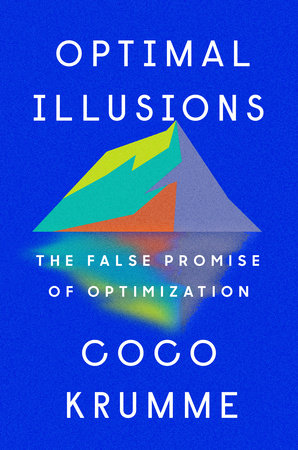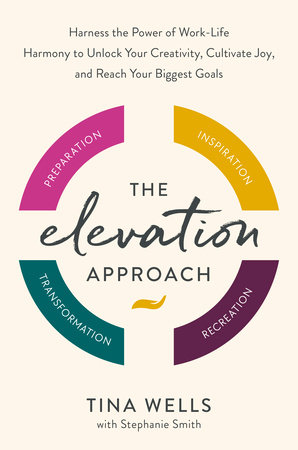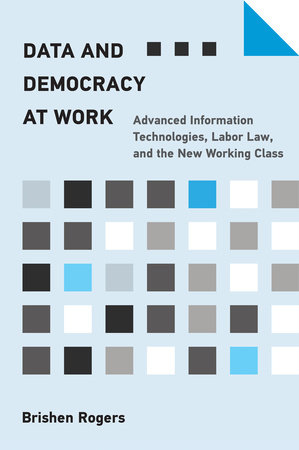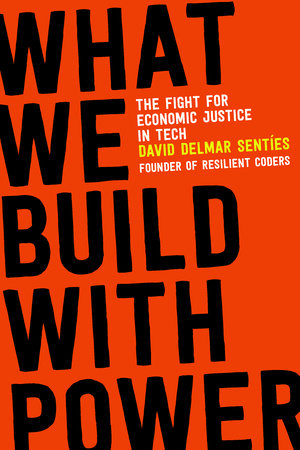The Innovator’s Dilemma is about how successful companies often fail to innovate and adapt to disruptive technologies, leading to their downfall. Clayton M. Christensen teaches you the reasons behind this phenomenon and presents compelling cases to illustrate his points. He argues that established companies’ focus on sustaining innovations blinds them to the potential of disruptive innovations, creating a dilemma that must be addressed to stay competitive in rapidly changing markets.
After reading The Innovator’s Dilemma, you’ll gain a new perspective on innovation, learn to recognize disruptive technologies, and be better equipped to navigate the challenges of staying relevant in a rapidly evolving business landscape.
Key Ideas
The key concepts in The Innovator’s Dilemma are:
- Disruptive Innovations: Recognize the importance of disruptive innovations, which are simple and initially inferior technologies, but have the potential to revolutionize industries and reshape markets. To achieve this, foster an environment that encourages experimentation and empowers small teams to explore new ideas without being constrained by existing product lines.
- Sustaining Innovations: Understand the role of sustaining innovations, which improve existing products and cater to the needs of current customers. However, be cautious not to solely focus on incremental improvements, as it may hinder your ability to invest in disruptive technologies that will shape the future.
- Customer Needs vs. Technology Push: Differentiate between customer needs and technology push. While it is essential to listen to customers and address their existing demands, make sure you also consider the potential of emerging technologies that might initially have limited demand but can become game-changers.
- Competing Against Non-Consumption: Explore the potential of competing against non-consumption, wherein you target customers who have been overlooked or underserved by existing solutions. By offering simpler, more affordable products, you can create entirely new markets.
- Overcoming Organizational Hurdles: Overcome organizational hurdles that often impede innovation. Encourage a culture that embraces risk-taking and tolerates failures as valuable learning experiences, allowing ideas to flourish and disrupt from within.
- The Innovator’s Dilemma as an Opportunity: Embrace the innovator’s dilemma as an opportunity to lead rather than lag behind in disruptive times. By recognizing the challenges and making strategic choices to invest in disruptive technologies, you can position your company for long-term success and adapt to changing market dynamics.
Key Ideas Expanded
The key concepts in The Innovator’s Dilemma are:
1. Disruptive Innovations
In the book, Clayton M. Christensen introduces the concept of disruptive innovations, which are transformative technologies or products that initially cater to niche markets or lower-end customers. These innovations often appear inferior to existing solutions but gradually improve over time to outperform and eventually disrupt established players. A classic example is the rise of digital photography, which initially offered lower quality than traditional film but eventually surpassed it, causing a decline in the film industry.
“Disruptive innovations start by serving fringe or new markets, but their performance improves rapidly, capturing more customers and overtaking established competitors,” explains Christensen.
To achieve success with disruptive innovations, companies must create an environment that encourages experimentation and risk-taking. They should allocate resources to small teams working on disruptive ideas and avoid stifling them with the constraints of existing product lines. By recognizing the potential of such technologies and nurturing them in their early stages, companies can position themselves as industry leaders in the long run.
2. Sustaining Innovations
While disruptive innovations are crucial for long-term success, sustaining innovations are also necessary for a company’s ongoing growth and profitability. Sustaining innovations involve incremental improvements to existing products or services, meeting the demands of current customers and sustaining the company’s established position. A well-known example is the continuous improvement of computer processors, which gradually increase in speed and capabilities.
“Sustaining innovations address the needs of existing customers and are crucial for companies to maintain their market position,” Christensen points out.
However, the danger lies in overemphasizing sustaining innovations and neglecting the potential of disruptive technologies. Established companies often invest heavily in improving their current products, but they may miss the opportunity to develop disruptive offerings, leading to eventual decline when disruptive competitors emerge.
To strike the right balance, companies must allocate resources and attention to both sustaining and disruptive innovations. By establishing separate divisions or investing in startups exploring disruptive technologies, companies can stay ahead of the curve and remain competitive in rapidly changing markets.
3. Customer Needs vs. Technology Push
Christensen highlights the importance of distinguishing between customer needs and technology push. While listening to customer feedback is essential for understanding current demands and improving existing products, it may not lead to the discovery of groundbreaking innovations. Disruptive technologies often emerge from a technology push, where technological advancements open up new possibilities that customers might not be aware of or explicitly asking for.
“Many disruptive innovations start as ‘wild ideas’ that seem impractical at first but later revolutionize industries,” Christensen explains.
An example from the book is the steel industry’s shift from traditional integrated steel mills to mini-mills. Initially, customers were satisfied with the performance of integrated mills, and they did not request a different approach. However, the mini-mill technology offered cost advantages that traditional mills couldn’t match, leading to their eventual success and disruption of the industry.
To achieve a balance between customer needs and technology push, companies should allocate resources to exploring cutting-edge technologies and applications. By encouraging research and development in diverse areas, companies increase the chances of discovering innovations that can reshape their industries.
4. Competing Against Non-Consumption
One of the fascinating ideas presented in the book is the notion of competing against non-consumption. Disruptive innovations often target customers who have been underserved or ignored by existing solutions. These innovations make products simpler, more affordable, and accessible to a broader audience, thereby creating new markets.
“Disruptive innovations can thrive by offering lower-cost, simpler solutions that attract new customers,” Christensen notes.
A classic example is the introduction of personal computers, which initially catered to hobbyists and individuals interested in computing. These early computers were not as powerful as mainframes, but they enabled non-consumers, who didn’t have access to or couldn’t afford mainframes, to perform tasks they couldn’t before.
To compete against non-consumption, companies must identify overlooked customer segments and their unmet needs. By designing products that address these needs and offering them at an affordable price, companies can unlock new market opportunities and outpace traditional competitors.
5. Overcoming Organizational Hurdles
Organizational hurdles, such as risk aversion, rigid hierarchies, and resistance to change, can stifle innovation within established companies. Christensen emphasizes the importance of overcoming these hurdles to foster a culture that encourages innovation and adaptability.
“Innovation requires a supportive environment that tolerates failures and encourages learning from experimentation,” Christensen asserts.
One of the examples in the book is about how Xerox, a pioneer in photocopiers, struggled to capitalize on the innovations developed at its Palo Alto Research Center (PARC). The corporate culture was risk-averse, and managers were hesitant to invest in projects that didn’t align with their core business. As a result, other companies leveraged PARC’s inventions to create products like the graphical user interface and the mouse, leading to their own success.
To overcome organizational hurdles, companies should promote a culture of innovation by rewarding risk-taking, creating dedicated innovation teams, and providing the necessary resources and autonomy for experimentation. Embracing a mindset that values learning from failures can lead to a more innovative and adaptive organization.
6. The Innovator’s Dilemma as an Opportunity
Lastly, the book presents the innovator’s dilemma as an opportunity rather than an insurmountable challenge. By recognizing the dilemmas and making strategic choices, companies can position themselves for long-term success and adapt to rapidly changing markets.
“Successfully navigating the innovator’s dilemma requires making difficult choices about investing in disruptive technologies,” Christensen advises.
Instead of solely focusing on short-term financial gains, companies should consider the potential long-term benefits of investing in disruptive innovations. By understanding the trajectories of disruptive technologies and their potential impact on the industry, companies can proactively shape their strategies to lead the market rather than be disrupted by it.
In conclusion, The Innovator’s Dilemma provides valuable insights into the dynamics of innovation and disruption. By embracing the concepts of disruptive innovations, sustaining innovations, technology push, and competing against non-consumption, companies can better position themselves for success in an ever-changing business landscape. Moreover, overcoming organizational hurdles and viewing the innovator’s dilemma as an opportunity allows companies to thrive in the face of uncertainty and create a future where they lead the market.
Actionable Advice
- Allocate Resources for Disruptive Innovation: Create a separate division or designate specific teams to focus on exploring and developing disruptive innovations. Dedicate a portion of your budget and resources to these initiatives to foster an environment that encourages experimentation and risk-taking.
- Balance Sustaining and Disruptive Innovations: While sustaining innovations are necessary for ongoing growth, don’t neglect the potential of disruptive technologies. Allocate attention and resources to both types of innovation to ensure your company remains competitive in the long run.
- Promote a Culture of Innovation: Overcome organizational hurdles by fostering a culture that values innovation and learning from failures. Reward employees for taking calculated risks and encourage cross-functional collaboration to generate fresh ideas and identify opportunities for disruptive growth.
Is “Shoe Dog” a Book Similar to “The Innovator’s Dilemma”?
Shoe Dog and The Innovator’s Dilemma may belong to different genres, but they both offer unique insights into the world of business and innovation. While The Innovator’s Dilemma explores disruptive technologies across various industries, Shoe Dog focuses on the shoe industry memoir of Nike founder, Phil Knight. Both books provide valuable lessons and inspiration for entrepreneurs and professionals alike, albeit from different perspectives.
How The Innovator’s Dilemma Will Change You
Your Life
Gain a new perspective on innovation and disruption. Embrace change and view challenges as opportunities. Understand the potential of emerging technologies and how they can transform industries.
Your Business
Learn to navigate the innovator’s dilemma strategically. Balance sustaining and disruptive innovations to stay ahead of the competition. Create an environment that fosters experimentation and empowers innovative teams.
Your Relationships
Foster a culture of innovation within your organization. Encourage risk-taking and learning from failures. Promote collaboration and cross-functional communication to generate groundbreaking ideas.
Who is Clayton M. Christensen?
Clayton M. Christensen was a renowned American business professor and management consultant. He was a professor at Harvard Business School and an influential thinker in the field of innovation and disruption. Christensen’s theories, particularly those in The Innovator’s Dilemma, have had a profound impact on the business world.
He believed that successful companies often face an “innovator’s dilemma,” where they struggle to adapt and innovate in the face of disruptive technologies. Christensen’s work emphasized the importance of understanding disruptive innovations and making strategic choices to remain competitive in dynamic markets.
More Books from Clayton M. Christensen
- The Innovator’s Solution: This book, co-authored with Michael E. Raynor, builds upon the concepts introduced in The Innovator’s Dilemma. It provides a framework for creating successful innovations, offering actionable advice for businesses seeking to thrive in a disruptive world.
Read These Next
You might like these similar books:
- The Lean Startup by Eric Ries
- Zero to One by Peter Thiel
- Good to Great by Jim Collins
- Crossing the Chasm by Geoffrey A. Moore
- Blue Ocean Strategy by W. Chan Kim and Renée Mauborgne







